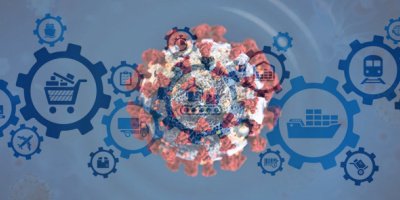As IBM weaves its strategy for mid-market enterprises, it is relying heavily on autonomic computing technologies to hold that strategy together. This is why many of these technologies--which IBM is introducing to servers via its Project eLiza initiative--are making their appearance in the company's operating systems and software. Indeed, OS/400 V5R2 is full of autonomic technologies.
As I explained in the first article of this series, IBM believes that over the next several years, mid-market organizations will become increasingly willing to source their IT solutions from computing utilities. This makes sense because many of these businesses don't have the skills or the desire to deal with the growing complexity of IT systems. However, mid-market firms aren't going to trust a computing utility unless it can guarantee absolute security, continuous availability, and consistently high service levels. That's a tall order for any IT installation to deliver, much less one that has to do so for hundreds or even thousands of utility computing customers.
That's where Project eLiza comes in. As most of you have heard, eLiza is IBM's initiative to develop servers that can perform many of the systems management tasks that humans perform today. Such autonomic systems are an important antidote to the high management costs associated with today's complex server farms and networks. However, Project eLiza is not just an effort to address the problems of today's distributed systems. It is also a warm-up exercise for fixing the problems of tomorrow's computing utilities.
To illustrate this fact, let's consider a Project eLiza tool that's shipping with OS/400 V5R2 at the end of August, then across the rest of IBM's servers: Enterprise Identity Mapping (EIM). Put simply, EIM reconciles all the user identities in a distributed network so that a user only has to log in once to access all the systems for which they are authorized. For instance, if Jane Doe is known as "jdoe" on the ERP system running on the iSeries but as "jane.doe" on the business intelligence system running on the xSeries, EIM will let her log on once to access both systems. Clearly, EIM will make it easier to manage user identities across multiple systems in a single company. However, for a computing utility that must manage the identities of thousands of users from hundreds of companies, EIM will be absolutely necessary.
There are other eLiza technologies in OS/400 V5R2 that prepare the iSeries for its role in computing grids. The Adaptive e-transaction Services feature, for instance, enables the iSeries' transaction manager to sense whether incoming transactions are single-threaded or multi-threaded, then optimize itself accordingly. In addition, DB2 UDB can automatically collect database statistics in the background and then use those statistics to optimize SQL queries. Features such as these will significantly reduce the systems management overhead of today's servers as well as tomorrow's computing utilities.
In the near future, other eLiza technologies will make their appearance across all of IBM's servers. One of these is a security wizard that asks users a series of questions about their IT environment and then configures the security settings of all the servers in the environment. This wizard will be quite similar to one that is already available on the iSeries. At this moment, a prototype of the wizard is on IBM's Web site (click here to try it). By the end of 2003, IBM intends to embed the security wizard in all of its operating systems and network management software.
One of the most exciting eLiza technologies in the works is an Enterprise Workload Manager (EWM) that will route workloads across servers and logical partitions. The EWM will not take the place of workload managers on individual servers; instead, it will determine how to balance and manage workloads across all servers. For instance, if the EWM detected that a Linux application's workload was exceeding the capabilities of an Intel server, it could route the workload to a more powerful Linux partition in an iSeries, pSeries, or zSeries server. Moreover, the EWM will use sophisticated algorithms to "learn" which routing strategies are most effective, allowing it to make better decisions over time.
Clearly, technologies like these will help mid-market customers to manage much of the complexity out of their distributed systems. However, the real market for the more sophisticated eLiza technologies will be larger companies and computing grids that manage hundreds or thousands of servers. These organizations will use autonomic computing technologies to build IT infrastructures that deliver computing capacity as reliably as power utilities deliver electricity. Over time, IBM believes that most mid-size firms will increasingly choose to buy their computing capacity from such firms.
Of course, the key phrase here is "over time," because autonomic computing will take years to implement. As a case in point, consider the EWM I mentioned earlier. While IBM will embed facilities to support EWM in its operating systems and middleware over the next year, the tool won't be fully functional until software vendors modify their applications so that the EWM can manage them. This will require software vendors to embed IBM's Application Response Management (ARM) programming interface in their applications. While IBM will make ARM available to developers in the fourth quarter of this year, it will take months or years for developers to embrace the API.
In short, creating massive networks of self-managing IT systems is a long-range goal that will likely take IBM and other systems vendors more than a decade to fully achieve. Over the next several years, however, IBM's autonomic computing initiatives will enable the computer giant to develop computing utilities with enough intelligence to deliver IT capacity to many mid-market organizations.
Lee Kroon is a Senior Industry Analyst for Andrews Consulting Group, a firm that helps mid-sized companies manage business transformation through technology. You can reach him at






















 More than ever, there is a demand for IT to deliver innovation. Your IBM i has been an essential part of your business operations for years. However, your organization may struggle to maintain the current system and implement new projects. The thousands of customers we've worked with and surveyed state that expectations regarding the digital footprint and vision of the company are not aligned with the current IT environment.
More than ever, there is a demand for IT to deliver innovation. Your IBM i has been an essential part of your business operations for years. However, your organization may struggle to maintain the current system and implement new projects. The thousands of customers we've worked with and surveyed state that expectations regarding the digital footprint and vision of the company are not aligned with the current IT environment. TRY the one package that solves all your document design and printing challenges on all your platforms. Produce bar code labels, electronic forms, ad hoc reports, and RFID tags – without programming! MarkMagic is the only document design and print solution that combines report writing, WYSIWYG label and forms design, and conditional printing in one integrated product. Make sure your data survives when catastrophe hits. Request your trial now! Request Now.
TRY the one package that solves all your document design and printing challenges on all your platforms. Produce bar code labels, electronic forms, ad hoc reports, and RFID tags – without programming! MarkMagic is the only document design and print solution that combines report writing, WYSIWYG label and forms design, and conditional printing in one integrated product. Make sure your data survives when catastrophe hits. Request your trial now! Request Now. Forms of ransomware has been around for over 30 years, and with more and more organizations suffering attacks each year, it continues to endure. What has made ransomware such a durable threat and what is the best way to combat it? In order to prevent ransomware, organizations must first understand how it works.
Forms of ransomware has been around for over 30 years, and with more and more organizations suffering attacks each year, it continues to endure. What has made ransomware such a durable threat and what is the best way to combat it? In order to prevent ransomware, organizations must first understand how it works. Disaster protection is vital to every business. Yet, it often consists of patched together procedures that are prone to error. From automatic backups to data encryption to media management, Robot automates the routine (yet often complex) tasks of iSeries backup and recovery, saving you time and money and making the process safer and more reliable. Automate your backups with the Robot Backup and Recovery Solution. Key features include:
Disaster protection is vital to every business. Yet, it often consists of patched together procedures that are prone to error. From automatic backups to data encryption to media management, Robot automates the routine (yet often complex) tasks of iSeries backup and recovery, saving you time and money and making the process safer and more reliable. Automate your backups with the Robot Backup and Recovery Solution. Key features include: Business users want new applications now. Market and regulatory pressures require faster application updates and delivery into production. Your IBM i developers may be approaching retirement, and you see no sure way to fill their positions with experienced developers. In addition, you may be caught between maintaining your existing applications and the uncertainty of moving to something new.
Business users want new applications now. Market and regulatory pressures require faster application updates and delivery into production. Your IBM i developers may be approaching retirement, and you see no sure way to fill their positions with experienced developers. In addition, you may be caught between maintaining your existing applications and the uncertainty of moving to something new. IT managers hoping to find new IBM i talent are discovering that the pool of experienced RPG programmers and operators or administrators with intimate knowledge of the operating system and the applications that run on it is small. This begs the question: How will you manage the platform that supports such a big part of your business? This guide offers strategies and software suggestions to help you plan IT staffing and resources and smooth the transition after your AS/400 talent retires. Read on to learn:
IT managers hoping to find new IBM i talent are discovering that the pool of experienced RPG programmers and operators or administrators with intimate knowledge of the operating system and the applications that run on it is small. This begs the question: How will you manage the platform that supports such a big part of your business? This guide offers strategies and software suggestions to help you plan IT staffing and resources and smooth the transition after your AS/400 talent retires. Read on to learn:
LATEST COMMENTS
MC Press Online